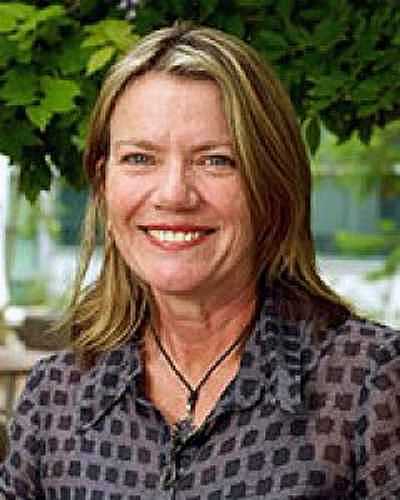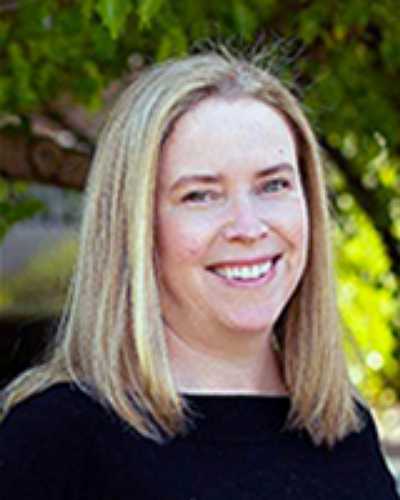Context
Enduring inequities in rural healthcare provision, underpinned by an inadequately sized and fit-for-purpose workforce, are well known to those invested in or tasked with supporting the sustainability of rural communities1-3. Complex and interrelated issues contribute to the challenges of maintaining a strong rural health workforce1,4,5. As recent government inquiries in Australia highlight, an inadequate health workforce has wide-ranging and fundamental consequences for the health and wellbeing of rural residents6.
The challenges in addressing rural health workforce issues coalesce with those related to disrupting the health professional hierarchy, in which medicine, as a broad discipline, remains dominant7 with status and resources more concentrated in high-profile medical specialities. In Australia, the dominance of medicine has provided the medical profession with considerable political influence in rural health policy8. This may explain why one of the most dominant frames through which to understand the rural health ‘problem’1 is the discourse of the ‘rural GP shortage’ (in some countries, GPs are called family physicians or practitioners).
From a Foucauldian perspective, discourse ‘lays down the 'conditions of possibility' that determine what can be said, by whom, and when’9. Discourse as a ‘group of statements which provide a language for talking about [and] a way of representing knowledge about – a particular topic’10:
governs the way that a topic can be meaningfully talked about and reasoned about. It … influences how ideas are put into practice and used to regulate the conduct of others. Just as a discourse ‘rules in’ certain ways of talking about a topic, defining an acceptable and intelligible way to talk, write or conduct oneself, so also, by definition, it ‘rules out’, limits and restricts other ways of talking, of conducting ourselves in relation to the topic or constructing knowledge about it11.
In Australia, the rural GP shortage discourse carries significant social power. By maintaining focus on the primacy of medicine’s role in the delivery of primary health care, it draws upon and reinforces the aforementioned health workforce hierarchy, which Vanstone and Grierson argue is a particularly effective mechanism for organising power and stratifying the interests of different actor groups12.
The discourse of the rural GP shortage (re)produces a dominant perception in Australia: that primary care is synonymous with GPs, which we argue is a limiting view. Primary care is the healthcare people seek in community, which can be provided by GPs, nurses and allied health professionals13. The medical workforce emphasis is seen in rural health policy14 and primary care spending13, with 53% attributable to GP attendances and only 10% to allied health.
In other settings, nurses are more extensively utilised; for example, 95% of general practices in the UK employ practice nurses compared with 65% in Australia15. This may be attributable to differences in funding mechanisms and flexible workforce used in each country – capitation compared with predominantly fee-for-service reimbursement15. In the Netherlands, primary care represents 90% of all health care delivered, with practice nurses actively involved in chronic disease management and mental health care, and having some diagnostic and prescribing roles15, while direct access to physiotherapy is common16. Moreover, a review of nurse-led clinics identified increased patient satisfaction and improved access to care17. However, in Australia, the construction of primary care as general practice, reinforced by the rural GP shortage discourse, is further enabled by how funding and resources are organised to position GPs as the financial gatekeepers of other primary care service providers (via referral contingent mechanisms) and reinforced in the training of health professionals18. Alternatives have been proposed – for example, the Rural Area Community Controlled Health Organisations model19 inspired by that of Aboriginal Community Controlled Health Organisations, which are exemplars of multidisciplinary primary care – and others are being trialled, for example the 4Ts project in NSW20. However, much of the funding remains tethered to GPs, rather than drawing on independent mechanisms.
Framing the issue narrowly as a lack of GPs in rural communities socialises policymakers and rural community members to think that training more doctors will ensure that rural healthcare needs will be sufficiently addressed. In response, countries like Australia, for the last 30 or more years, have primarily focused investment of public funds for the development of health workforce into securing the supply, especially of medical doctors, for rural places. Some of these investments support important aspects of addressing the rural health workforce shortage. For example, the Rural Health Multidisciplinary Training program represents a significant investment in the rural student experience and clinical placements through the University Departments of Rural Health (nursing and allied health) and the Rural Clinical Schools (medical students)21. These educational and rural exposure components are a longstanding and fruitful experiment – necessary, but insufficient to achieve sufficient attraction and retention of health professionals in rural places.
Relatedly, despite the well-known importance of a ‘good fit’ for attracting and retaining health professionals to work and live in rural places22, often, little regard is given to the ‘fit’ of those who are, for example, selected to train in rural places or who undertake rural placements, for rural practice and rural ways of living1. Public investment in attraction and retention has received significantly less attention than workforce development investments1. While in the past five years there have been some exceptions (eg the Rural Health Workforce Support Activity program, which is implemented by workforce agencies in the states and territories to support healthcare organisations in workforce planning, providing attraction incentives and funding access to training for rural-based doctors and other health professionals23), there remains a significant gap in investment between development of health workforce and attraction and retention strategies. This has led to counterproductive internal competition for resources when those vested in rural health should be united to secure political and financial commitment to redressing serious spatial healthcare injustice for rural communities.
In the process of implementing a funded 2-year pilot of the Attract Connect Stay (ACS) – Community Connector Program (CCP) in rural Australia22,24, the authors closely observed the effects of the rural GP shortage discourse. In this commentary, we are interested in what the rural GP shortage discourse has meant for bottom-up, grassroots community development approaches to strengthening the rural health workforce, like CCP, and top-down supports for improving rural healthcare quality. We explore how well the frame of the rural GP shortage marries with rural residents’ current health and social care needs, and the circumstances of rural GPs. We propose implementing several multi-level actions to further stimulate and promote a much-needed shift in discourse and power to alter investment and lead a future re-imagining of the rural health workforce. While the context of focus is Australia, the issues described are commonly experienced worldwide, in both high- and low-income countries, making the lessons learned relevant to other settings.
Issues
When considering rural communities’ health and social care needs, there is a disconnect between these needs and the dominant perception that GPs alone are the workforce required. In Australia, a higher proportion of older people live outside metropolitan areas, with one in three people aged 65 years or over residing in rural and remote regions25. Consequently, the need for aged care services and support is higher in these communities compared to metropolitan areas. Disability rates are also higher in rural and remote regions, with 23.1% of residents experiencing a form of disability compared to 16.4% of residents living in major Australian cities26. This includes children with learning and other forms of disability who are entitled to a range of educational supports22,27. Rural and remote residents experience greater rates of injury and hospitalisation28, for which intense, often longer-term rehabilitation care is required. People outside metropolitan areas also have higher rates of chronic and mental health conditions29 that need a range of social, emotional, occupational and health supports. Such issues have become the most significant challenge to healthcare provision30,31, and current evidence demonstrates that the best way to address these multifaceted and complex needs is through a combination of medical, nursing and allied health expertise32 (ie through multidisciplinary team care). However, this healthcare needs profile has developed since Australia’s universal health insurance scheme (the Medicare Benefits Scheme (MBS)) was established. To date, this scheme has seen only piecemeal adjustments rather than a reorientation that would enable full mobilisation of the health workforce.
Nurses constitute the largest workforce in rural and remote Australia33. As a profession, nursing is closely aligned with medicine, and its practitioners can perform a range of tasks that a GP would normally perform34. Given the large size of the nursing workforce, and the high levels of organisation and unionisation, significant investment has been made in rural training programs, pipelines and specialist credentialing pathways to enhance access to health care in rural places. Despite these developments, there remains sustained resistance from broader medical professional bodies, in which we argue the views of specialists rather than community-orientated GPs are privileged, to enabling other health professionals, specifically nurses35, to work to their full scope of practice. It is claimed by some in the medical fraternity that new nurse roles like that of nurse practitioner represent a ‘dumbing down’ of medical expertise that will lead to the delivery of an inferior service36.
In Australia, allied health professions include ‘therapy’ and ‘science’ disciplines37,38, such as creative art therapists, dietitians, exercise physiologists, occupational therapists, physiotherapists, podiatrists, psychologists, social workers, speech therapists, audiologists, medical imaging specialists, optometrists and sonographers. Allied health professionals are a vital resource in delivering quality, comprehensive and community-responsive health care39. In the Australian health sector, allied health constitutes the second-largest clinical healthcare workforce40. While all health professional groups are maldistributed in Australia, maldistribution is more severe within allied health professions35.
Collectively, allied health professionals are renowned for being collaborative practitioners and have diverse and flexible scopes of practice to meet the needs of many client groups41. While these wide scopes of practice are ideally suited to addressing the multiple complex needs observed in rural settings, permeable professional boundaries have had the unintended consequence of undermining the allied health professions’ power and authority. For example, the allied health workforce has been less successful than medicine in ‘promoting, expanding and protecting their resources and autonomy through distinction and legitimising practices’42. Consequently, allied health has less influence over decisions about how primary care funding is distributed34. The historical roots of this power dynamic lie in how gender as a power relation is embedded within the health workforce hierarchy43. Medicine as a profession is considerably older and entrenched with gender beliefs that continue to advantage men over women44, whereas allied health, as a collective of professions, is comparably younger and women-dominated, which, within a structure that assigns professional authority, respect and prestige along (binary) gender lines, subjugates the perspectives and interests of allied health practitioners.
In explicating how nursing and allied health professions are positioned within the rural GP shortage discourse, it is important to emphasise that the circumstances of rural GPs are also obfuscated. Rural GPs often have long waiting lists and promote the importance of collaborating with other health and social care professionals to help meet their patients’ needs and view multidisciplinary collaborations as the best way to maximise patient outcomes. Yet these realities, and the desire of many rural GPs themselves to work in a multidisciplinary care team environment, are rendered largely invisible through the current framing of the issue, which is driven by broader power struggles.
Lessons learned
During its implementation, the CCP pilot was found to be far more challenging to mobilise a community around the need to attract and retain allied health or specialist nursing workforces. The focus of the residents and businesses in rural communities in NSW that we met while scoping for pilot sites, like the prevailing discourse, was squarely on GPs, even in situations where the services needed by the community could be offered competently and safely by other health professionals. The discourse of the rural GP shortage limits broader understanding, at both the political and community levels, about the skill sets required to provide quality primary care and how rural residents’ health and social care needs can be most efficiently met. To shift this framing and the resulting situation, investment is needed to develop sustainable models of primary care that work for rural communities and strategies for preparing, attracting and retaining a range of health professionals, not exclusively doctors. We must promote an alternative discourse focusing on the capabilities and skills required to meet rural client healthcare needs rather than which profession(s) should provide those services45.
Strategic actions at different levels in the system can stimulate and support this shift and alter the current discourse. At the meso (group) level, we suggest representative bodies of allied health professions collaborate with rural communities to develop a broader understanding of and support for different ways of providing health and social care. Clear messaging to communicate that ‘different’ does not mean ‘inferior’46 is needed. To achieve the best possible outcomes, it is critical to articulate the match-up between rural health and social care needs and the expertise of different groups of health professionals. At the structural (systems) level, the full scope of allied health and nursing professional capabilities must be enabled so that these professional groups can provide maximum benefit to rural communities. For example, youth and sexual and reproductive care-orientated health and social services have demonstrated the strengths of nurse-led models in providing responsive and holistic health care47,48. The key barrier to implementing nurse-led care models is structural, as care provided by nurses is generally not subsidised by Australia’s MBS, which, until recently, primarily reimbursed services provided by doctors. This has resulted in the costs of operating nurse-led healthcare models being largely unsustainable in rural communities48.
The MBS’ dominant focus on GPs has made them gatekeepers of the primary healthcare dollar and the primary decision-makers for community-based healthcare. GPs are responsible for making referrals to specialist services, releasing funding for nursing and allied health services, multidisciplinary team care and coordinating access to them. Australia’s GPs are also pivotal in providing review and documentation to support access to multiple schemes such as the National Disability Insurance Scheme (NDIS) and Motor Accident Compensation Scheme. This system positions nursing and allied health at the periphery, relying heavily on medical professionals, and does not take into account the contexts in which rurally based GPs are practising.
The introduction of Australia’s NDIS has challenged the central role of GPs in individuals accessing allied health services. However, to access NDIS, individuals first need to undergo a range of specialist and specialised allied health assessments – and to access these diagnostic services a GP referral is required49. Moreover, while it is possible to access allied health services privately (cost incurred by the consumer) without a GP referral, this is not a common option in rural Australia due to higher levels of socioeconomic disadvantage and a lack of private services as a result of ‘thin markets’50,51.
Work towards our recommended actions has already begun, as demonstrated by the programs and policies encouraging rural generalism and multidisciplinary care52-54. Such approaches encourage GPs, nursing and allied health professionals to work to the top of their scope of practice55. However, greater political courage is still needed to create a healthcare system that acknowledges and endorses the use of the complete range of health professionals, fully utilising their skills and capabilities, as fundamental to the rights and futures of rural communities. Enabling multidisciplinary care in the rural context requires a change in discourse and power that will produce different investments so that, ultimately, it is attractive to come and stay rural for a range of health professionals.





